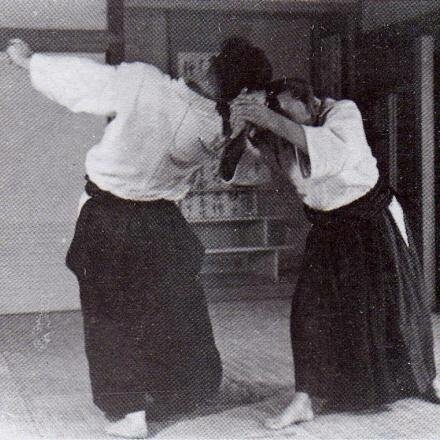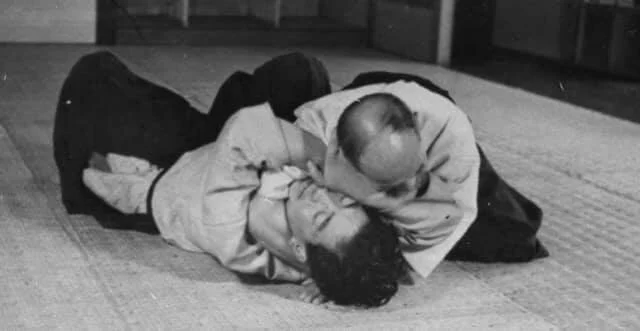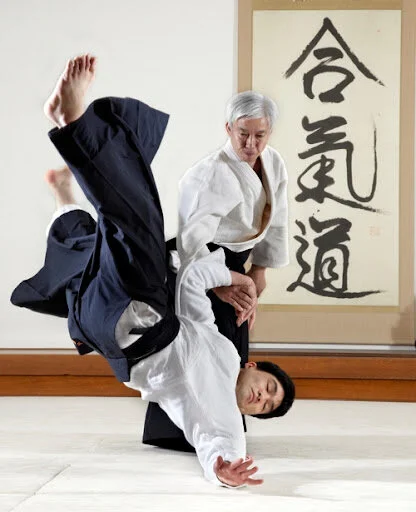
Aikido
Ai (合) - To join or unify, Harmony
Ki (氣) - Spirit, Life, Energy
Do (道) - Path or Way of Living
Aikido is one of the most modern forms of Japanese martial arts or Budo, created in the middle of the 20th century by Morihei Ueshiba (1883 – 1969) who is known to Aikido students as OSensei or Great Teacher.
Since his youth, OSensei studied numerous martial arts, including a particular form of jujutsu called Daito-Ryu, which influenced his early technical development in the creation of Aikido.
The combination of OSensei’s personal and spiritual development, as well as the fact that he lived during the events of the Second World War, gave Aikido the technical and philosophical characteristics that it has today.
Training in Aikido involves a variety of skills including learning how to anticipate, lead and redirect the force and intention of your partner. This allows you to unify with their movement in order to control it in the most efficient way.
Of equal importance is the capacity to receive (ukemi) the techniques by remaining aligned and connected with your partner at all times.
From a martial point of view, Aikido techniques include projections, chokes, strikes, sweeps, dislocations and pinning techniques. The technical repertoire is vast but as with other traditional martial arts, it is practiced in an environment of care and mutual respect amongst its practitioners.
One unique characteristic of Aikido (Aikikai) is the lack of organised competitions, tournaments and weight classes. This means that all students, regardless of their physical characteristics, train with each other in an effort to learn and develop as individuals.
Today, the legacy of OSensei is carried on by the Aikikai Foundation in Tokyo, Japan, where the grandson of O’Sensei, Moriteru Ueshiba, continues leading the Aikido world.
“Aikido is the power of harmony, of all things, of all beings working together”
Kisshomaru Ueshiba





